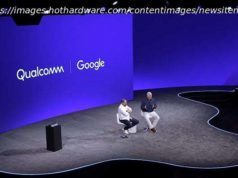Nokia’s continuing its mobile market comeback tour with the release of the Nokia 7.1, a midrange machine with solid specs, an all-new display, and a great new design. Best of all? Nokia’s midrange is finally returning to the U. S. Here’s absolutely everything you need to know.
If you’d told us three years ago that Nokia would make a strong comeback in 2018’s mobile market, we probably wouldn’t have believed you. Yet here we are with the Nokia 7.1, another of HMD Global’s strong pushes into the mobile midrange. While the Nokia 7 was only released in China at the tail end of 2017, the Nokia 7 Plus impressed us in March 2018, providing great bang for its buck — but it also didn’t see a U. S. release.
Now, HMD Global — the company with the Nokia phone license — is finally bringing its midrange to the U. S. with the Nokia 7.1, and we’re excited to see how big an impact it will have. Here’s everything you need to know about the Nokia 7.1.
Midrange mobiles have seen a renaissance over the last year, with many flagship design trends filtering down the price brackets. It’s now rare that you need to compromise on design when picking a cheaper phone, and the Nokia 7.1 is a great example of this. It’s made from an aluminum frame overlaid with glass, and though it doesn’t have the refractive qualities of a phone like the Honor 8X, it’s still an attractive design. A vertically dual-lens camera suite sits in the top-center of the phone, with the fingerprint scanner sat flush underneath.
Flip it over and that dedication to updated design continues. While some still object to notched displays, we’ve seen more and more phones tap into the trend in 2018. The Nokia 7.1’s notch is small compared to some we’ve seen, and it gives plenty of room to either side for the status bar. There’s still a sizeable bottom bezel — though that can probably be forgiven at this price range — and there’s still some bezel present around the edges of the aluminum frame.
Thankfully the notch doesn’t mean less display, and the 5.84-inch display has been stretched out to a 19:9 aspect ratio. HMD Global calls it a “PureDisplay” screen, and it displays in full HD, rocking a 2280 x 1080 resolution. It also supports HDR10, and is capable of converting SD content to HDR. HMD Global also boasts that the screen will also get bright enough to be seen comfortably in full sunlight — a claim that we’ll happily put to the test in our review.
While you’re not going to get the latest specs on the Nokia 7.1, the midrange machine is packing some powerful numbers that’ll see you through most tasks.
The Nokia 7.1’s main brainpower is provided by the Snapdragon 636, a strong midrange chip we saw give a great performance in the Moto Z3 Play. We expect it’s given a considerable amount of grunt in the 7.1 too, and while it won’t be as smooth and snappy as the latest flagship equipped with the Snapdragon 845, the Nokia 7.1 should be a decent performer in most mobile games, and should be able to handle day-to-day tasks with ease.
Four gigabytes of RAM back up the processor and should be more than capable of handling multiple tasks and switching between apps. There’s a sizeable amount of storage too, with 64GB as standard and the option to expand that by up to 400GB with a MicroSD card. That MicroSD slot also doubles as a dual-SIM, giving you easy switching if you’re a world traveler. The U. S. will only be getting the dual-SIM version, but it’s worth noting that some international models will be single-SIM, and will come with 3GB of RAM and 32GB of storage as well as 4GB/64GB. Keep an eye out for that if you’re not shopping in the U. S., and make sure you get the version you want.
The battery’s on the slightly smaller side, weighing in at only 3,060mAh. We’re expecting we’ll get a day’s use out of the Nokia 7.1 though, and the phone also comes with a USB-C port, complete with fast charging. Nokia also claims the 7.1 will be able to recharge up to 50 percent of its power in just 30 minutes.
Good news for lovers of pure Android — HMD Global’s still rocking undiluted Android One in its phones. Unfortunately, the Nokia 7.1 won’t be launching with Android 9.0 Pie, but with updates coming straight from Google you can be fairly sure that the 7.1’s Android 8.1 Oreo will be updated as soon as Pie is released on Android One. Nokia 7.1 users will also get two years of Android upgrades and three years of monthly security updates too — that means users can expect to get updates to Android Q, as well as Pie.
Nokia’s added some extra stuff to the phone though, including the ability to stream “Bothies” — which show both the front and back camera at the same time — directly to social media, and an A. I. enhanced front camera that will enable 3D masks, filters, and personas. Outside of that, you’ll find the latest features from Google, including Google Assistant, Google Lens, and eventually all the new features from Android 9.0 Pie .
HMD Global’s continuing its partnership with Zeiss on the Nokia 7.1, so you’ll find Zeiss-tuned optics here. The camera suite on the back is comprised of a main 12-megapixel lens with an f/1.8 aperture, paired with a secondary 5-megapixel lens that provides the prized background blur “bokeh” effect. There’s an 8-megapixel lens with an f/2.0 aperture around the front, which is also capable of a portrait-style blur effect.
Google Lens can be quickly and easily accessed from the camera app, along with Motion Photos. Nokia’s celebrated Bothie mode makes a welcome return, taking a picture with the front and back cameras simultaneously for a truly unique photo, and can now even be streamed straight to social media. You’ll also be able to apply A. I.-enhanced stickers, masks, and personas to your selfies.
The Nokia 7.1 will cost $349 and will be available for pre-orders from October 5, in gloss midnight blue and gloss steel. The phone will release fully on October 28, and will be available for purchase and pre-order from Amazon, Best Buy, and B&H.





